Foresights and ideas that expand minds and inspire a change of heart.
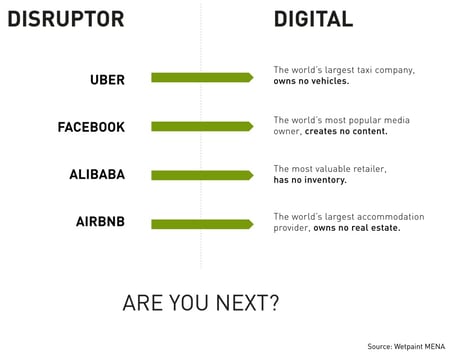
We are approaching the end of this year, therefore I have decided to write a blog post about the top ten business trends of 2015 from Thinque's perspective. It's been an exciting year, we have seen established trends grow even more and new interesting trends starting to emerge and take shape.
Companies like Alibaba, Uber, Facebook and AirBnB share one common trait - they all have a platform thinking approach to innovation. They are creating and delivering value without creating more stuff. AirBnB is the largest accommodation provider and owns no real estate. This approach to innovation are not only changing entire industries, but also having an impact on society at large.
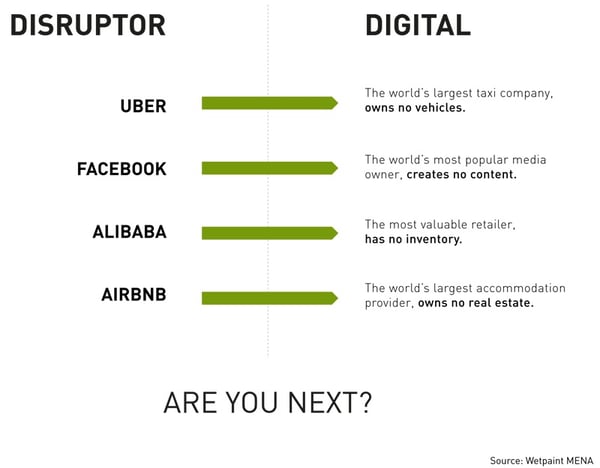
The common thread among a lot of digital startups is that they are cutting out the middle man in the supply chain, and this is exactly what the french online food co-op La Ruche Qui Dit Oui (they are also known as Food Assembly in the UK) are doing by connecting consumers with producers.
Disintermediation is defined as the removal of intermediaries in the supply chain. During 2015 we have seen how the digitisation have changed the dynamic and blurred the lines between supplier, manufacturer, wholesaler, retailer and buyer. The make up brand Mink founded by Grace Choi is another example of this - it's the worlds first 3D printer that prints makeup. And it works really simple, you just snap a photo of a object with a certain color and within less than two minutes you can print a lipstick in that exact color.
Which industry do you think will face digital disintermediation in 2016?
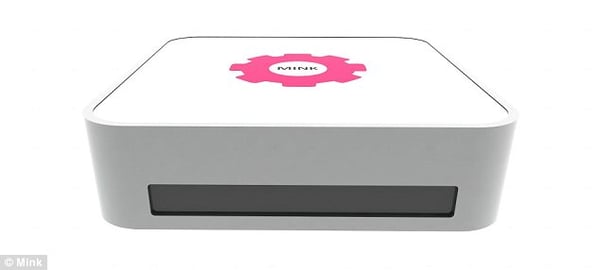
The customer journey used to be linear and designed by brands, but today it looks more like a slinky spiral and customers are switching between different devices and accessing information in a wide range of ways. We have moved from the old school marketing funnel to a slinky spiral which means that today's brands need to adapt an omnichannel perspective and really think about how they can create a seamless customer experience across all channels.
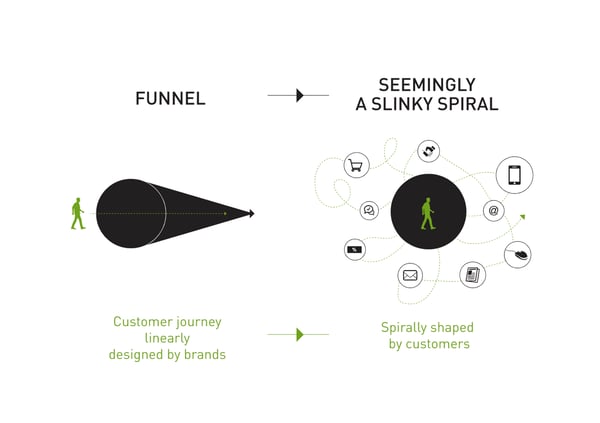
One interesting example of the Internet of Things is Nest which have recently been acquired by Google. The fascinating thing about Nest is that it's designed like a central intelligence hub for your home. In fact it can learn your schedule, program itself and be controlled from your smartphone which enables you to reduce your energy footprint and lower your heating and cooling bills. Technologies like this can be applied to a wide range of different product categories, from home appliances to wearables.
The research firm Gartner predicts that 6.4 billion things will be connected in 2016 which would represent a 30% increase compared to this year.
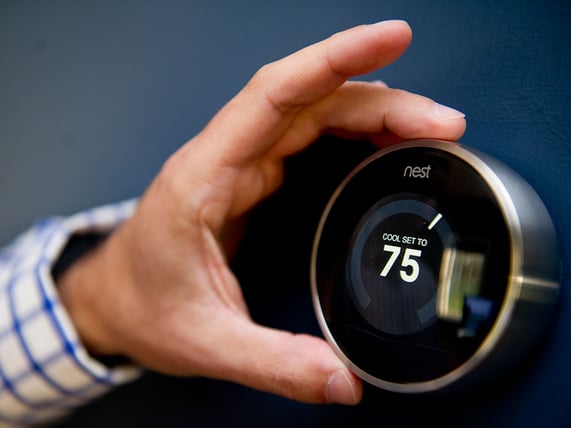
Through mobile screens, devices and wearable tech we have an increasing ability to gain an insight into the consequences of everyday decisions, for example we can get data visualizations on the recommended intake of calories. Furthermore, fitness apps like Nike+, the Jawbone app, the Nike+ FuelBand and Fitbit are helping people making smarter decisions about their health. As a result of this consumers are able to make new decisions about their consumption and in real time we are able to make a decision in favour or against a brand depending on the visualization of the data.
Thanks to the rise of digital technologies we are moving from a world of information assymetry (where one part has more or better informtion than the other part) to a world of information symmetry where the buyer and seller have access to the same kind of information. This is changing the relationship between the buyer and the seller and therein sales and ofcourse also marketing.
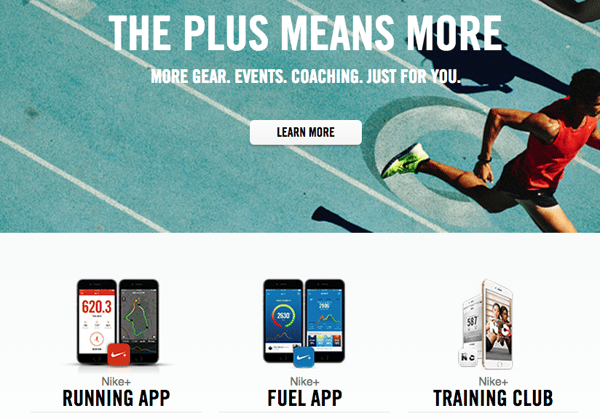
Today's Millennials or Generation Y as they are also called prefer access before ownership - In an article in Fast Company, Josh Allan Dysktra argue that the concept of shopping have shifted from owning stuff to buying into new ideas. Furthermore Dysktra argue that we are starting to think differently about what it means to own something and that this paradigm shift in thinking together with new technology will create even more growth for the on-demand economy.
Food startups like Seamless, Munchery, Instacart and Doordash are some examples of the increasing on-demand economy. Another interesting example is Uber's new service called UberEats which basically is a food delivery service where they let their users order food through the app.
According to TechCrunch food and grocery delivery have been one of the most popular venture capitalist sectors with a half a billion dollar invested in the first quarter of 2015, and it looks like it's going to grow even more next year.
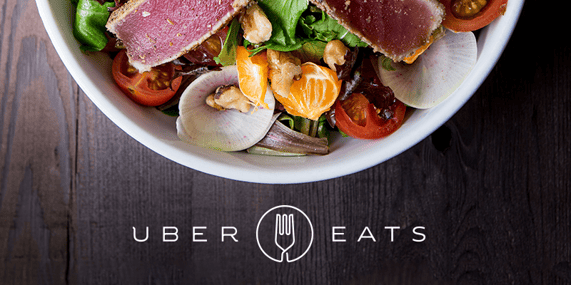
Like other futurists I believe that robots will be increasingly common in our daily lives in the future. However the future is now and we have already seen how robots and drones have tranformed manufacturing and also agriculture - in Japan, 30% of all rice fields are being fertilized by drones.
Another sector that will be transformed by this trend is transport. Back in 2010 the American Trucking Association warned the industry that by 2022 there would be a massive shortfall of 239 000 truckdrivers. This all goes back to the argument that Andrew McAfee and Eric Brynjolfsson make in their book The Second Machine Age: Work, progress and prosperity in a time of brilliant technologies where they point out that there is going to be a decoupling between US producivity and job growth.
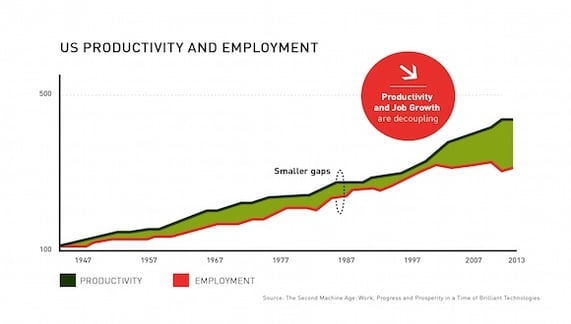
The role of cash has changed in today's post-digital-disrupted society. Cash used to be king, but in the future, of course it's not going to be. One of the countries in the world that is at the forefront of this change is Sweden - it's actually the most cashless society in the world.
An organization that has been highly affected by this change is the Swedish street magazine Situation Stockholm which is sold by homeless people in Stockholm, Sweden. They found out that the sales of their magazine were decreasing significantly and first they could not figure out why. It was not because people didn't want to support the cause or that they didn't find the content intriguing, it was because they weren't carrying cash. To solve this problem Situation Stockholm adopted the mobile payment service iZettle and after this technology adoption the sales increased with 59%. And of course, it's not just Generation Y or Millennials, in Sweden, 50% of Swedish pensioners use cash cards everywhere according to the Swedish Pensioners Organization.
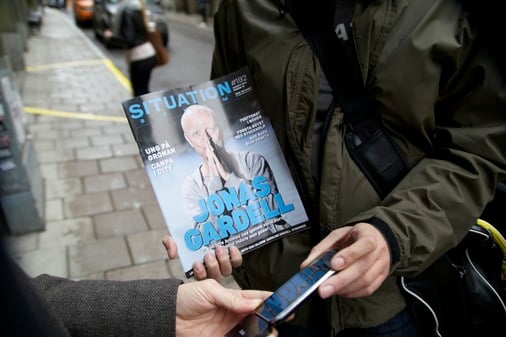
New over the top players are using the digital infrastructure to decouple finance from traditional finance players. Moven, Simple, Tink, Pocketbook and Mint are a few examples of digital startups and fintech players that are gaining popularity and starting to compete with traditional banks.
Today, if we need a loan we can go to Lendico. If we need to transfer some cash overseas, don't go to your bank. Go to TransferWise. This freaks our banking clients out because they're starting to lose the primary relationship with the customer. And if you are a marketer or have a marketer's mindset you understand that it is very important to own the customer relationship.
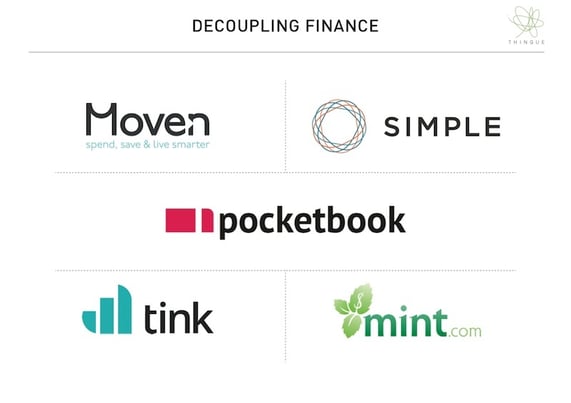
Smart local branding experiences is important because we are not only digitizing, we're also mobilizing - in local contexts. In our back pockets we have situationally relevant information that can help us make smarter decisions about our health and much more, and because of gamefied solutions in other contexts of our lives - we can take control of our finances, romantic lives, diets, and driving and much more.
The real estate firm Urban Compass is a great example of an organization that have realized the importance of smart local branding experiences. With the help of their app they get hyper local in the communities where they're helping us to pick out real estate even better. Urban Compass offer us a personal concierge and can tell us about, say, Kensington or Notting Hill or Primrose Hill, for example. This is where tradition and technology shows us that they're not mutually exclusive but can rather support one another.
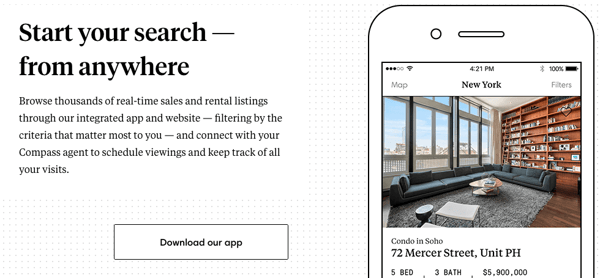
So these are our top 10 business trends of 2015. Do you think I missed a trend? If so, please comment below or tweet to us at @thinque_ or @anderssormannilsson. Which business trends do you think will emerge and grow even more in 2016?
Happy New Years from Anders Sörman-Nilsson and the Thinque Team!

Header Text
Lorem ipsum dolor sit amet, consectetur adipiscing elit, sed do eiusmod tempor incididunt ut labore et dolore magna aliqua. Ut enim ad minim veniam, quis nostrud exercitation ullamco laboris nisi ut aliquip ex ea commodo consequat. Duis aute irure dolor in reprehenderit in voluptate velit esse cillum dolore eu fugiat nulla pariatur.
Lorem ipsum dolor sit amet, consectetur adipiscing elit, sed do eiusmod tempor incididunt ut labore et dolore magna aliqua. Ut enim ad minim veniam, quis nostrud exercitation ullamco laboris nisi ut aliquip ex ea commodo consequat. Duis aute irure dolor in reprehenderit in voluptate velit esse cillum dolore eu fugiat nulla pariatur.
Lorem ipsum dolor sit amet, consectetur adipiscing elit, sed do eiusmod tempor incididunt ut labore et dolore magna aliqua. Ut enim ad minim veniam, quis nostrud exercitation ullamco laboris nisi ut aliquip ex ea commodo consequat. Duis aute irure dolor in reprehenderit in voluptate velit esse cillum dolore eu fugiat nulla pariatur.

Header Text
Lorem ipsum dolor sit amet, consectetur adipiscing elit, sed do eiusmod tempor incididunt ut labore et dolore magna aliqua. Ut enim ad minim veniam, quis nostrud exercitation ullamco laboris nisi ut aliquip ex ea commodo consequat. Duis aute irure dolor in reprehenderit in voluptate velit esse cillum dolore eu fugiat nulla pariatur.
Lorem ipsum dolor sit amet, consectetur adipiscing elit, sed do eiusmod tempor incididunt ut labore et dolore magna aliqua. Ut enim ad minim veniam, quis nostrud exercitation ullamco laboris nisi ut aliquip ex ea commodo consequat. Duis aute irure dolor in reprehenderit in voluptate velit esse cillum dolore eu fugiat nulla pariatur.
Lorem ipsum dolor sit amet, consectetur adipiscing elit, sed do eiusmod tempor incididunt ut labore et dolore magna aliqua. Ut enim ad minim veniam, quis nostrud exercitation ullamco laboris nisi ut aliquip ex ea commodo consequat. Duis aute irure dolor in reprehenderit in voluptate velit esse cillum dolore eu fugiat nulla pariatur.

Header Text
Lorem ipsum dolor sit amet, consectetur adipiscing elit, sed do eiusmod tempor incididunt ut labore et dolore magna aliqua. Ut enim ad minim veniam, quis nostrud exercitation ullamco laboris nisi ut aliquip ex ea commodo consequat. Duis aute irure dolor in reprehenderit in voluptate velit esse cillum dolore eu fugiat nulla pariatur.
Lorem ipsum dolor sit amet, consectetur adipiscing elit, sed do eiusmod tempor incididunt ut labore et dolore magna aliqua. Ut enim ad minim veniam, quis nostrud exercitation ullamco laboris nisi ut aliquip ex ea commodo consequat. Duis aute irure dolor in reprehenderit in voluptate velit esse cillum dolore eu fugiat nulla pariatur.
Lorem ipsum dolor sit amet, consectetur adipiscing elit, sed do eiusmod tempor incididunt ut labore et dolore magna aliqua. Ut enim ad minim veniam, quis nostrud exercitation ullamco laboris nisi ut aliquip ex ea commodo consequat. Duis aute irure dolor in reprehenderit in voluptate velit esse cillum dolore eu fugiat nulla pariatur.
& STAY UP TO DATE WITH FORESIGHTS AND TREND REPORTS!
WE WILL EQUIP YOU WITH THE VIDEOS AND MATERIALS YOU NEED TO SUCCESSFULLY PITCH ASN.
0 Comment